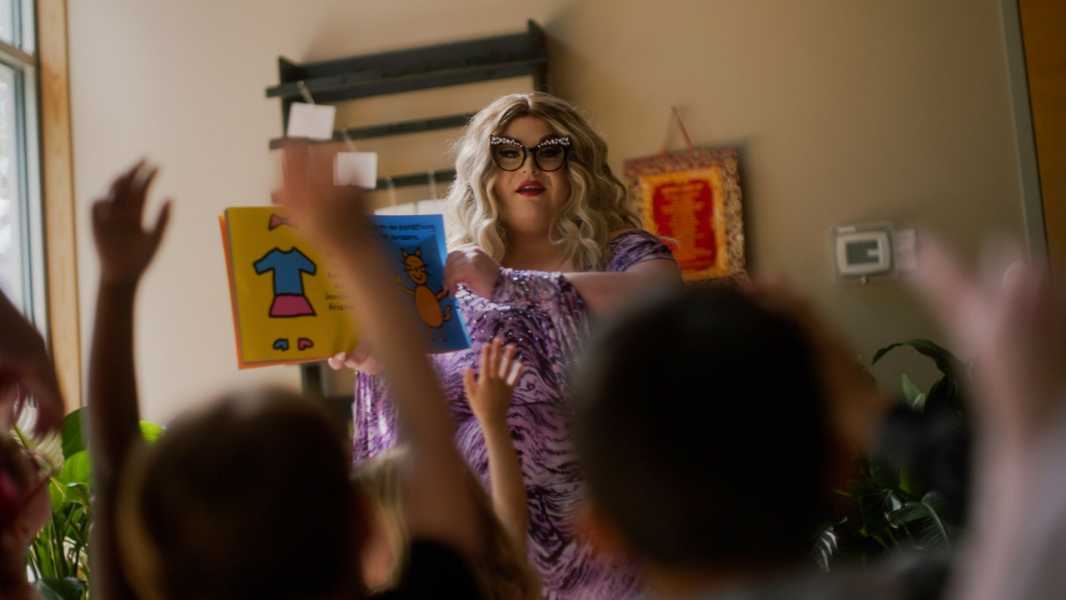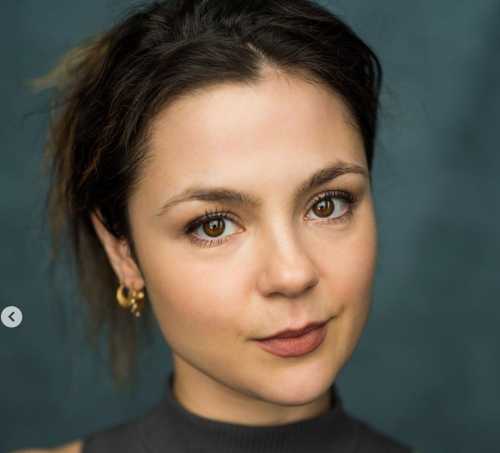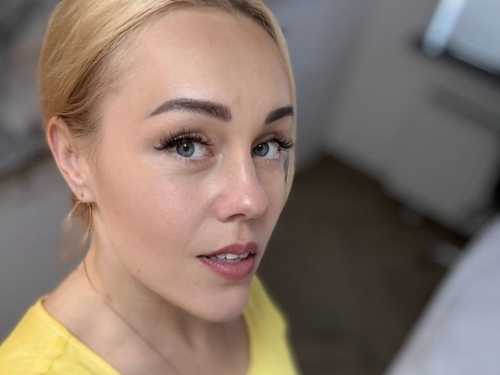
Save this storySave this storySave this storySave this story
Watch “It’s Okay.”
In late December, 2022, when demonstrators gathered outside a public library, in Queens, to protest a Drag Story Hour, the filmmaker and investigative journalist David France was present to observe the scene. “Members of the Proud Boys were there in uniform,” he recalled. “Actual Nazis were throwing actual Nazi salutes. They alleged that the drag queens were pedophiles preying on the children—grooming children and worse.” France went on, “And then I noticed that the kids attending the event were taking all of this in from the library’s second-floor window. They looked frightened.”
In the years that followed, state legislators across the U.S. introduced dozens of bills to criminalize or otherwise restrict some drag performances for being potentially harmful to children, although many of these either failed or were later blocked by judges on constitutional grounds. Drag Story Hours, which had been a staple of libraries and other kid-friendly spaces in large progressive cities and beyond for going on a decade, suddenly became a focal point for a larger right-wing backlash against trans and queer rights.
The New Yorker Documentary
View the latest or submit your own film.

France, a renowned chronicler of L.G.B.T.Q. movements and lives, is best known for the Oscar-nominated documentary feature “How to Survive a Plague” (2012), a history of AIDS activism, and the acclaimed book of the same name that followed four years later. With his new short film, “It’s Okay,” presented with MSNBC Films, France said, “I wanted to document the experience of a young librarygoer attending his or her first Story Hour, someone with no ideas one way or another of what might be expected there.” He settled on a boy in North Carolina named Leo, “whose thoughts seemed to play out in real time across his face,” France said; the queen of the hour was Shelita Bonet Hoyle, who offsets her fabulous purple-infused raiment with a sparkly pair of cat-eye reading glasses, and the picture books are Todd Parr’s “It’s Okay to Be Different” and “The Family Book,” which deliver a cheerful cartoon message of inclusion and acceptance. Leo, at age nine, is a few years outside of the typical Story Hour demographic, and, in the film, his wary, arm’s-length engagement with the Story Hour provides a dynamic contrast with that of his delighted little brother Mateo, who, at age four, is squarely inside the target audience.
Most kids don’t have the radar to pick up the themes of gender and sexuality that course through drag performance. Instead, they’re responding to the pantomime energy: the elaborate costumes and makeup, the slapstick voices and expressions. “I don’t think Leo and Mateo thought of Shelita as a drag queen,” France said. “They saw her as a kind of happy clown.” (Years ago, when I took my daughter, then four, to a drag queen Story Hour, she referred to the reader as “the princess”—it was the “queen” part, not the “drag” part, that stuck with her.) Much of the outrage that has been stoked about Drag Story Hours, then, is a matter of ugly projection; “It’s Okay,” with its uninflected, matter-of-fact approach, replaces perception with reality. France said that his film aspires to be “pure observational journalism,” which may generate cognitive dissonance in the viewer—disbelief that an unremarkably pleasant event such as this one could ever be the stuff of violent protest.
The political buzzword of the moment is “weird”—in fact, Tim Walz’s use of the epithet helped to catapult him into the Democratic V.P. spot. At an unusually optimistic moment for progressives, “It’s Okay” makes a quiet, powerful case that the epitome of weird is to make a scapegoat out of a glamorous dame reading nice stories to children. ♦
Sourse: newyorker.com






